Copyright 2020 - 2021 irantour.tours all right reserved
Designed by Behsazanhost
All Should Know about Atigh Great Mosque - Isfahan
All Should Know about Atigh Great Mosque - Isfahan
The fact is that the Atigh Great Mosque, the oldest mosque in Isfahan, is certainly well-known as one of the Particular historical monuments for either Islamic history or the beginning of civilization. However it almost backdates to 1300 years ago (reigning time of Abbasian caliphs), and it can be noticed as a sensible and spiritual structure in many aspects that include the architectural, artistic, scientific, and influential efforts in religious cultural, political, and social fluctuations due to the different eras.
 |
Nevertheless, Isfahan was somehow in the heart of Iran and has been well-known as an effective town in both of culture and civilization of Muslims moreover, it consists of several mosques since the early Islamic centuries. The Atigh Great Mosque has absolutely been the main religious center in this city and there is no such compact place elsewhere. Some of the experts' interpretations such as Abou Naim's sayings proceeding the considerable effects which have been conceived on the construction of this monument.
As a matter of fact, this ancient memorial contains many specific features, especially its variety and delicacy that are even pointed out as other unprecedented specifications of Isfahan. It shows, however, its significant role in all the history, culture, and civilization of both Iran and Islam. Not only are the various architectural styles of safe parts exclusive but also the art of utilizing all kinds of calligraphies including either Persian or Arabic languages, the mosque demonstrates the Interestingly, the oldest entrance of Kufic Sols, Naskh, and Nastaligh used in either Persian or Arabic.
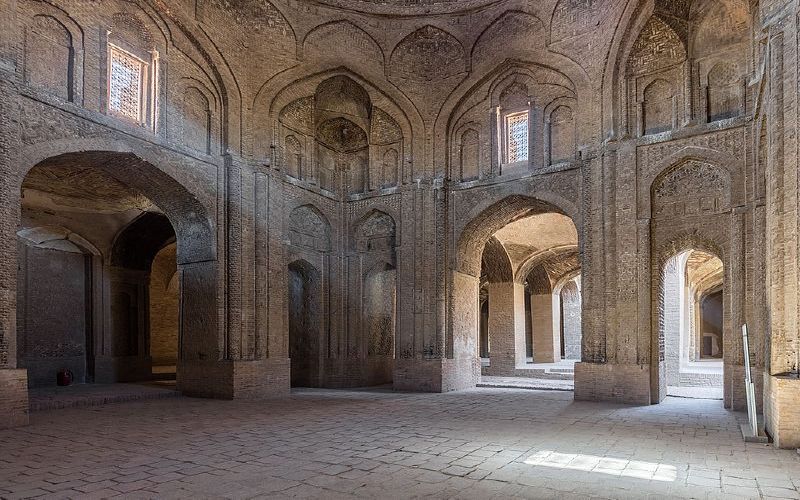 |
In fact, the reason for having many portals around the mosque demonstrates the accessibility of all other locations of the town, and interestingly, the oldest el, is just in the northeast of the mosque heralding a catastrophic ordeal is a huge conflagration by Hassan Sabah's followers or Ismailians). Despite the minor transformations of the Great Mosque was designed from the Arabic stu and furthermore, it was formed during the reigns of Abou Doulpheh Ajali and Dailamit whereas the plan of the mosque was completely changed by the Seljuk reign all over and they adjoined two of the outstanding masterpieces to the mosque (southern and northern dome of chambers) and finally, transformed the view of the courtyard via adding four verandas at four sides of the courtyard. Therefore, the frequent constructions have progressed due to the numerous historical dynasties like the Ilkhanid. Mozafarid, Taymorid, Tourkamananz Safavid, and Qajar reigns, and they factually built stunning parts such as the Oljayto Mehrab and the Baiytoul Shettah hypostyle.
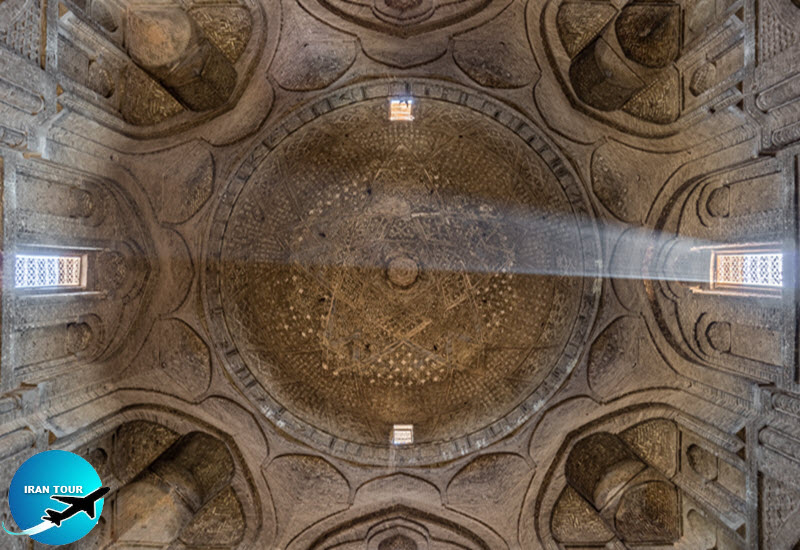 |
The fact is that so many prominent scientists and erudite theologians have lived in Isfahan whose educational places were generally inside the Atigh Great Mosque like Davood Ebneh Solaiymon Taheri, Hamze Isfahani, Saheb Ebn Abbad, and whoever. The author of the book "the landmarks of Isfahan' mentions the glorious presence of approximately two hundred popular scientists and researchers in all sorts of religious sciences and studies in the Atigh Great Mosque. The Saheb porch, a southern constructed annex, can make us look back to the time when Saheb Ebn Abbad (one of the Alleh Booyehs'expert ministers) indoctrinated his disciples inside the present veranda.
The scientific debates, however, bespeak about the noticeable cultural progression in the case of the religious sciences and issues in various fields, and at the time of Seljuk's reign, khojandian whose scientific and spiritual capabilities have been resounding in the Islamic world. Thus, founding the Nezamie (the collage of the ancient times) by me order of Khajeh Nezamol Moulk, the minister of Malek Shah Seljuk, had the approximate vicinity to the recent Great Mosque in those days and more important than that, the Khajeh Nezam dome of the chamber was likewise dedicated for some of the official educational conventions.
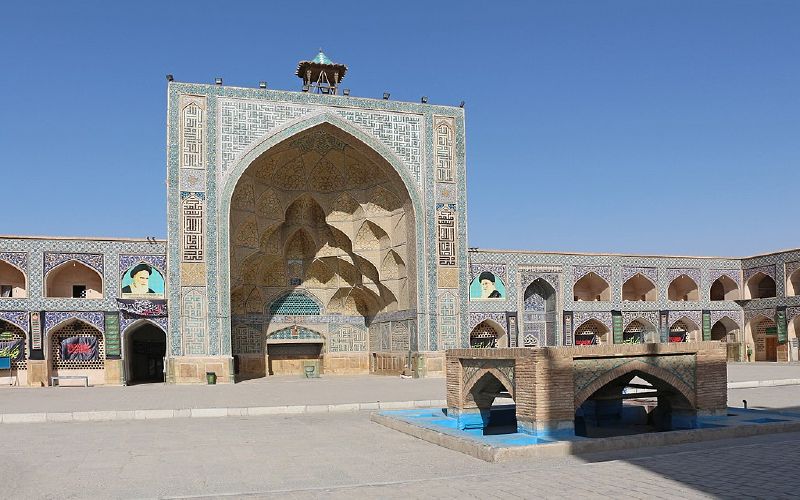 |
Another worthwhile inheritance of the Atigh Great Mosque, anyway, was its only par excellence religious library which consisted of all sorts of scientific books, headlines, and even the extra lists of the more important sources that had carefully been compiled in other books. However, the catastrophic arson in the Great Mosque had left an unmitigated calamity, just like a rapid break out of the blaze over the prairie and that's why historians like Ebneh Assir assumed that as a complete disaster.
With the exception of all the cultural and spiritual incidents and their efforts, the Atigh Great Mosque of Isfahan was moreover an eyewitness to the religious-political conflicts and animosities for a long time. According Moghadasie's point of view, he clearly mentioned some of the bloodcurdling and vendettas of the 11th-century reign leaving a death toll of 5000 people such as the clashes between the Seljukian rulers and Smailians(followers of Hassan Sabbah) like burning down the library of the Great Mosque and all of its sources. The point is that the evidence confirms the Atigh Great Mosque has been one of the cornerstone places for moral purposes and gathering the different societies and also proposing the significant matters of both religious and cultural problems since the disintegration of Seljuk's monarchy up to the start of the Safavid's ruling power and remaining the Mozafarid's maintained construction(Mozafarid's madrasa).
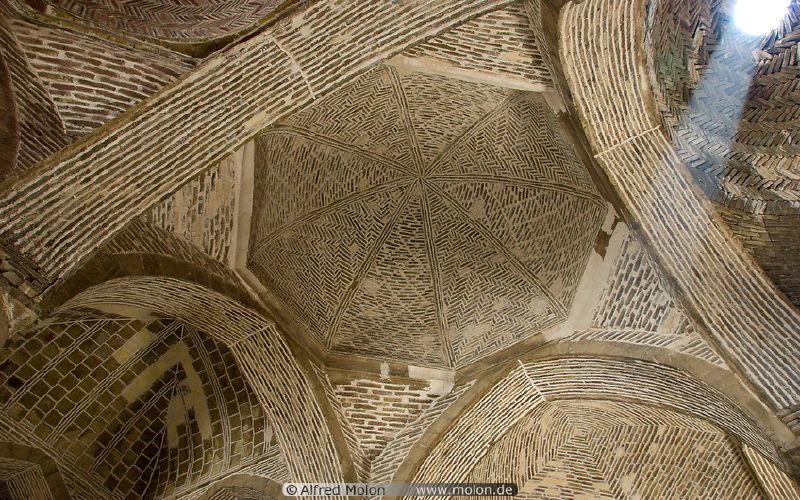 |
The emergence of the Safavid dynasty, however, influenced the promotion of the Great Mosque more than before, especially by transcending the Shiat religion in Iran itself. Because of being a vital headquarter, It was certainly a widespread center of all religious, scientific, and social issues in Isfahan. There were many special zones close to the Atigh Great Mosque migrant clergymen of Jabal Amel and Majlesy families close to the Atigh Great and besides having divine aspects, the Great Mosque had also been accounted as an institute of in doctrine, authorship, and research. Publishing such a dignified compilation like Bahar Al Anvar, was to an extent relevant to this major which was assumed as an encyclopedia of the Islamic sciences.
In fact, the Atigh Great Mosque Of Isfahan is quasi-well-known as a precious onyx during the tumultuous history of the civilization and culture of the Islamic Republic of Iran. Although it had been assaulted by both Ghermetians and Ghazhas sects during history and it had likewise been damaged by the Iraqi's attacks it's still seen as an empowered gigantic fort and such a perpetual epitome of spirituality, architecture, art, sanctuary, upbringing, and pedagogy.
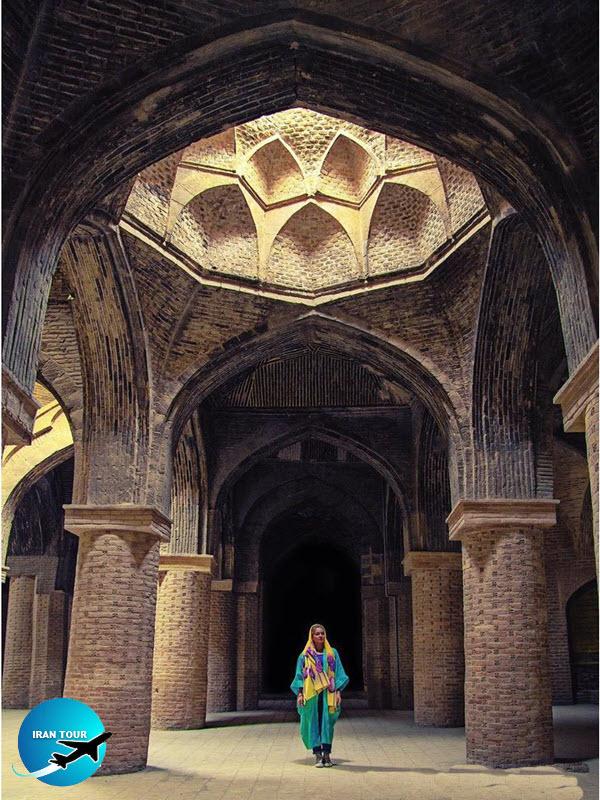 |
Spiritual Values of Atigh Great Mosque
Probably the initiation of the first important district in Isfahan was exactly at the same time as the construction of the Atigh Great Mosque in the latest location in the 8th century that was the sum of a few villages there and it can also be known as the central front of the town and its existence goes back to the urban transformations due to the ancient dynasties.
All of the historical evidence prove that the oldest square of Isfahan and its neighboring areas formed the early neighborhoods in the city. First of all, if we possibly want to know about the places of residence in Isfahan, we certainly have to discuss the Jewish-inhabited region (so-called Yahoodie) and secondly, we will briefly talk about the multi-central dwelling regions around it such as Yevan, khoshinan, Jobbareh and etc. The historical documents are all self-evident that the above-mentioned residential centers couldn't have perpetual solidarity among themselves because of religious or any type of conflicts, but there were still a lot of economical-cultural interactions among them and here, the ancient square had a key role, exactly like those interactions. When Isfahan was invaded by Arabs, they approximately devastated Jay city. Therefore, the residents of these such dwellings had to share their ideas together, and eventually, a new city was founded through their unity.
The Atigh Great Mosque of Isfahan honestly has lasting fame as a masterpiece of Islamic architecture in Iran devoting the tremendous transformations during its history to itself. The Great Mosque is most well-known because of entailing the Islamic architectural styles and that's for sure, the Great Mosque is definitely a full-fledged kaleidoscope of the arts of the Islamic eras from the initial centuries up to the late times.
Since ancient times, Isfahan was almost ever chosen as one of the mainstay centers of both policy and religion all over. However, this event caused, we actually witness either the deliberate or systematic changes according to each incident and the turmoil in all of the political, religious, and social problems each time historically, perhaps these transformations have several reasons and political and social conditions might only affect the type and the style of the mosque. As a matter of fact, the Atigh Great Mosque was recorded as the 95th historical monument for the national monuments of Iran and even in the archive of the global monuments in the 36th conference of UNESCO held in San Petersbourg in 2012 A.C.
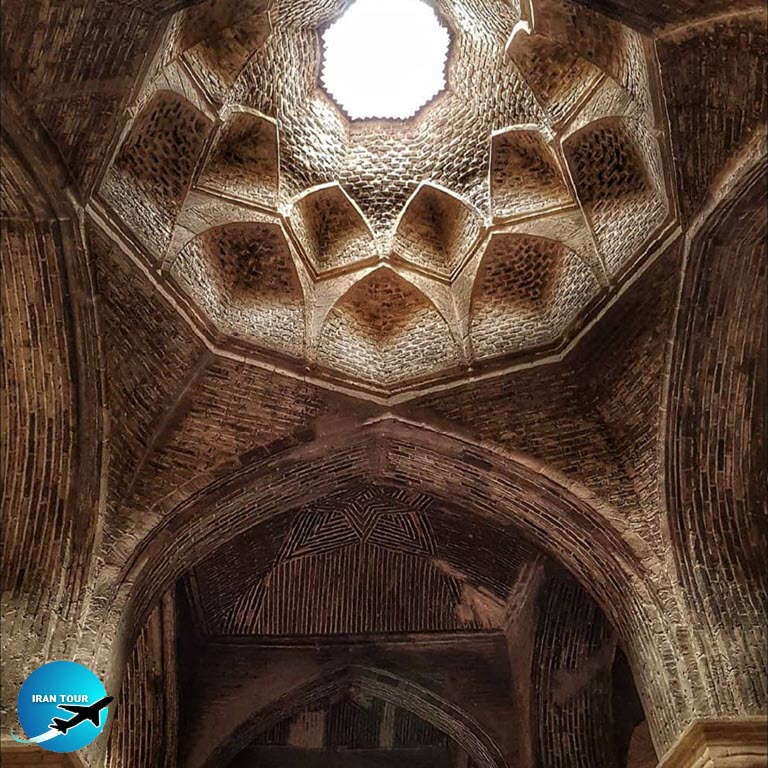 |
- Importance of Employed Ornaments in Atigh Great Mosque
The total adjoined decorations of the Atigh Great Mosque of Isfahan reveal a series of ornamental arts due to the long-term history of the city and of course, the architectural transformations implemented over the Great Mosque. In fact, the numerous spaces have been adorned with an enjoyable variety of ornamental techniques according to each one of the former reigns, especially the fascinating attachments. The adobe walls (simple muddy walls of the first mosque) however, had been covered with a soft layer of mud in the 9th century and its circular-shaped columns were built with brick(having zigzag designs) and plaster coverage.
Although the constructive attachments of the 10th-century reign (Alleh Booyeh) were somehow in some minor spaces by having three or two parallel rows of columns with absolute brickwork decorations, hollow and embossed reliefs raised above the surface, basically the decorated surfaces were entirely encrusted from both the skillful brickwork and geometric designs on the columns, walls, and vaults during the Seljuk reign in which predates by the 11th century.
During the ruling time of the Ilkhanians, they flourished the art of the plasterwork inside the Great Mosque, especially by engraving the various calligraphies and floral motifs on their plasterworks. Moreover, they also built one of the most beautiful Mehrabs of the Islamic mosques constructed in the Great Mosque that purports the delicacy of their plasterwork magnificently. One of the ornamental ways utilized at the reigning monarchies of the Mozafarid, Taiymorid, and Safavid dynasties, was employing glazed tiles, especially decorating the arcades inside the courtyard, Mehrabs, verandas, and portals. Using a series of ornamental arts like combining both pieces of brick and tile as a sort of tile work, manifested either the wonderful or unquestionable solidarity and harmony in this mosque for the first time.
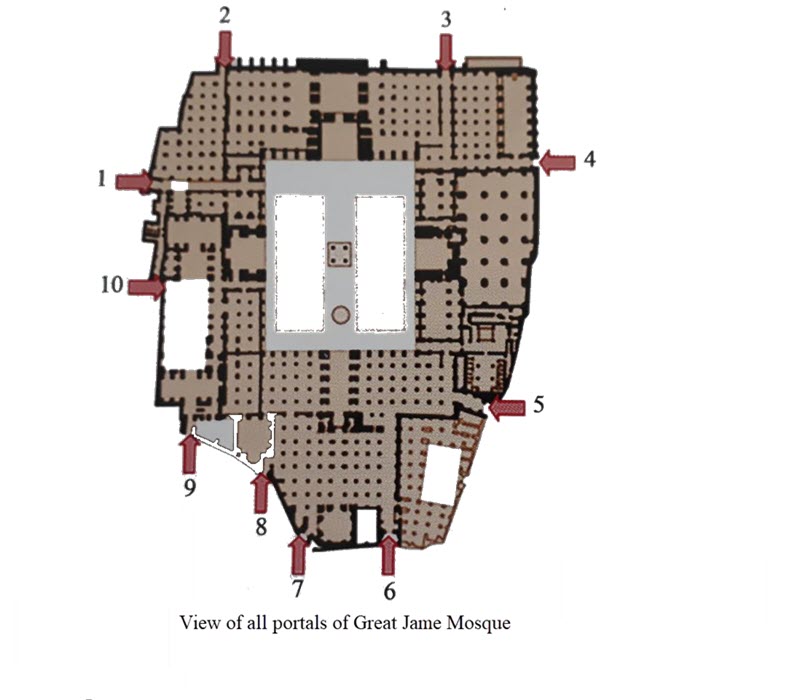 |
- Several Portals of the Great Mosque
The Atigh Great Mosque frequently consists of many high portals due to its geographical location in comparison with the highest economical and social regions of the town and besides, being accessible for the dwelling houses around, one of which reaches some alleys and shops. It's totally encompassed by 10 gigantic gates that all of them were adjoined in different dynasties. In this part, we are briefly going to mention all portals and their chronograms or maybe, inscriptions.
1- The main present portal of the mosque is located at the beginning of the southeast entrance and has a pair of stone-built platforms sideways and absolutely astonishing ornaments of seven-colored tile work. It backdates to the Qajar reign's constructions.
2- The southeastern gate is so close to the former library of the Great Mosque
3- The southwestern portal in the vicinity of the Safavid Hypostyle
4- The Babool Dasht portal predating the reign of the Safavid
5- The Aboo Eshaghie gate at the northeast of the Great Mosque consists of the masterpiece of the dark blue - tiled ornamentations and writings on it (backdating the 17th century)
6- Majleci portal next to the Tajol Moulk dome chamber
7- The gigantic portal having the mosaic work just at the back of the northern dome(Its inscription refers to the annexes of the Ale Mozafar era)
8- The oldest portal of the Great Mosque is located the far northeast of the Tajol Moulk dome its inscription heralds the past arson (a very large fire destroying a building)
9- The portal in which is in the Bazaar at the east of the Great Mosque is not used at the moment
10- The portal of the Mozafrid madrassa that is not used either
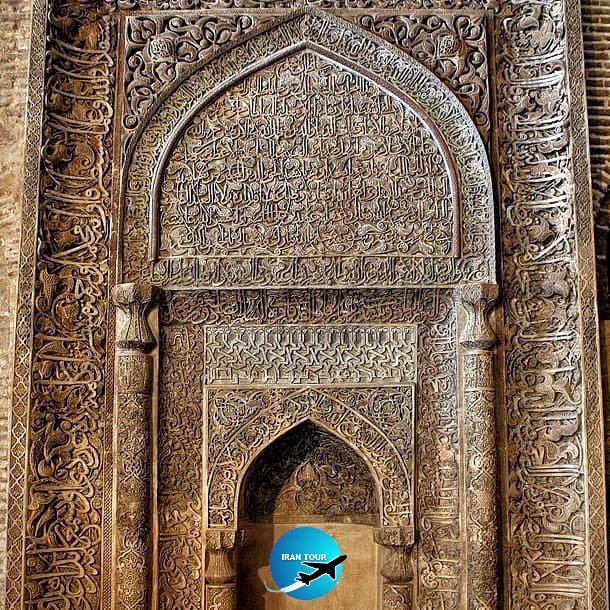 |
| Unique Oljayto plaster-engraved mehrab |
- Numerous Mehrabs of Atigh Great Mosque
The interesting point about this mosque, however, is the multitudinous number of Mehrabs (the direction that a congregational prayer leader stands in front of (either feasible or not) that is presumed as one of the noticeable features of this monument. Despite the fact that they are so many, none of the previous sources had mentioned this before with the exception of the Oljaytoo Mehrab is the fame of universal art. In fact, most of the Mehrabs of the Great Mosque is the symbolic types of Islamic architecture in Iran according to both the artistic viewpoint and frequency of the decorative transformations. Some of the books, however, in
some parts of theirs are written (about 9 Mehrabs) whereas the entire number of them is 14 and are absolutely very important for the researchers gathering some information about the historical existent arts. However, many of these Mehrabs have been customized like being covered, restored, or even adjoined a new material to it during the different dynasties. All fourteen Mehrabs were built in the south, southwestern, and southeastern of the Great Mosque and there are no of them in the north. They were all constructed and decorated with many materials and several ways. Totally, there are six tile-decorated, five marble-covered, and three plastered of them.
- Tangible Mehrabs of Atigh Great Mosque
1- The Safavid Mehrab of the forty-columned hypostyle which has a precious piece of marble engraved all over
2- The Mehrab in the right-sided area of the Nezamol Moulk dome in which is ornamented in the middle-upper arch and contains a smooth piece of precious alabaster
3- Nezamol Moulk dome of chamber's Mehrab that consists of either the mosaic or marble works
4-The Mehrab on the left side of the Nezamol Moulk dome in which is a simple tiled one.
5- The one in the southeast of the southern veranda
6- The alabaster-covered Mehrab on the southwest side of the Saheb porch
7- The plaster-embossed one at the end of the southeastern or main entrance of the Great Mosque
8- The Mehrab of the eastern veranda is decorated with a piece of light alabaster
9- Eastern hypostyle's Mehrab having the masterpiece of mosaic work on itself
10- Mozafarid madrasa's Mehrab with a stripe of the tile work
11- Unique Oljayto plaster-engraved mehrab
12- Westem veranda's Mehrab.
13- Mehrab of the winter-used hypostyle
14-The Mehrab of the hypostyle which is located at the north of the western veranda
Intangible Mehrabs of the Great Mosque
1-The Abbasian plastered- Mehrab predates the first art adjoining the Great Mosque located under the floor of the southern dome.
2-The original Seljuk’s brick-decorated Mehrab on the south side of the Nezamol Moulk(at the back of the blue_colored tile Mehrab of the Safavid era.
3-Mozafarid madrassa's Mehrab that its main structure comprises the brickwork.
- Details
- Category: Museums of Esfahan